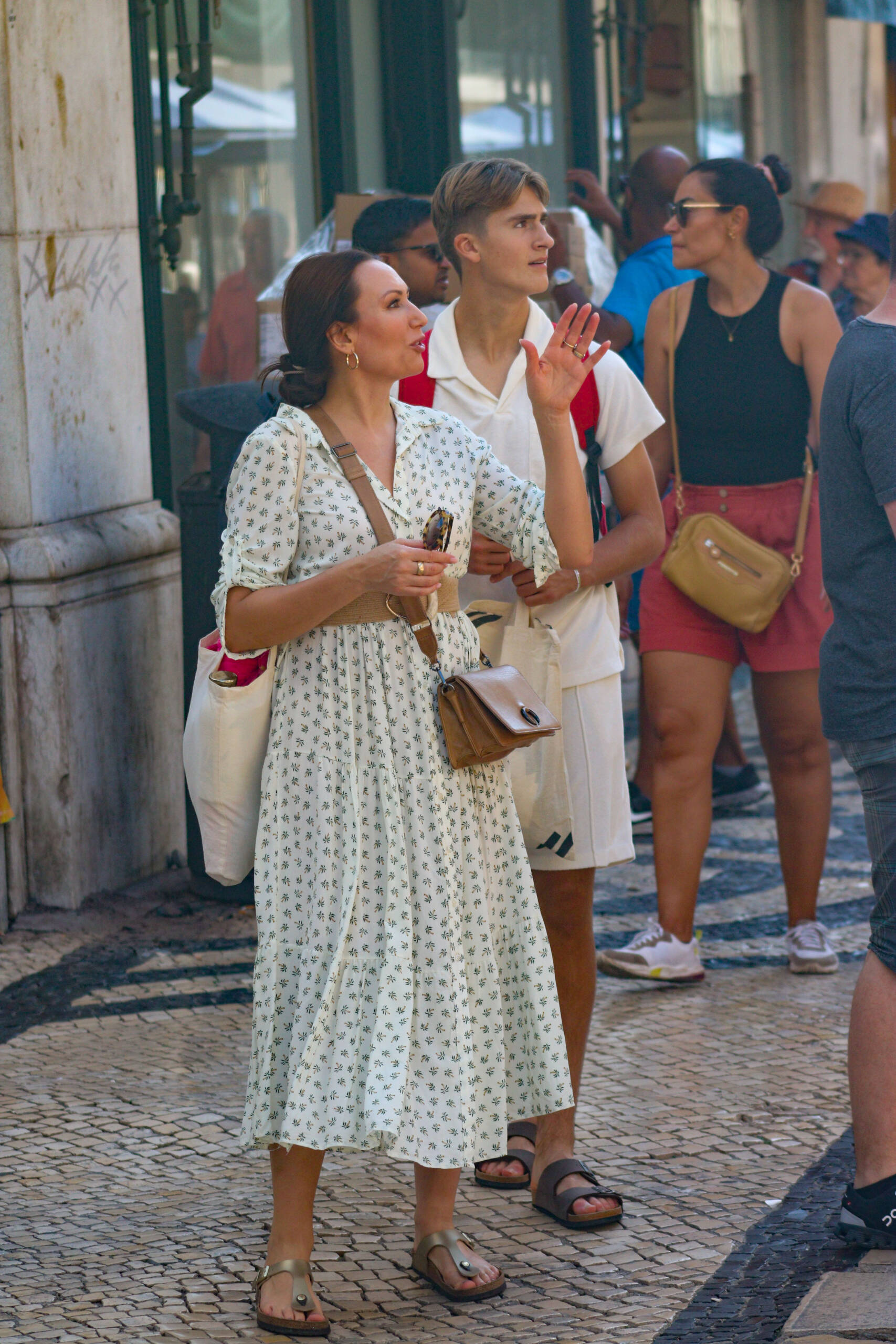The scene on Rua Augusta is a familiar one: tiled pavements shimmering in the midday light, a slow-moving crowd weaving between cafés and boutiques, and the subtle hum of multiple languages echoing off stone façades. In this photo, a woman in a flowing patterned dress gestures animatedly while a younger companion scans the street ahead. They look engaged, curious, and exactly like what they are—visitors. And while there is no shame in traveling, there is a delicate art in avoiding the telltale markers that make one an easy target for scamsters and pickpockets, especially in European capitals like Lisbon.

The first rule is to resist over-gesticulating with guidebooks, maps, or phones. Tourists often pause mid-street to point, discuss directions, or snap photos in ways locals rarely would. In the image, the raised hand and absorbed expression read as fascination, but also as distraction—exactly the window petty thieves look for. A quieter way to navigate is to study your route beforehand, duck into a café for recalibration, or use discreet earbuds for audio guides instead of stopping in the middle of a busy pedestrian artery.
Fashion is another subtle signal. Locals in Lisbon, even in the summer heat, rarely wear overtly “practical” outfits designed for all-day wandering. Comfortable sandals are a necessity, yes, but pairing them with understated clothing helps balance function and anonymity. Neutral colors, fabrics that breathe but don’t scream “holiday dress,” and crossbody bags worn forward-facing all help. Notice the small brown crossbody in the photo—it’s well chosen, as it keeps belongings close, though ideally it should rest at the front of the body when in a crowd. Backpacks, especially worn loosely on both shoulders, remain the most obvious beacon to a pickpocket.
Behavior, though, is the strongest giveaway. Locals tend to move with purpose, even if leisurely. Tourists linger, stall, and cluster. The easiest way to sidestep that signal is to adopt a rhythm of walking with intention, even if you’re still figuring out where to go. A confident stride not only reduces unwanted attention but also weaves you more naturally into the city’s flow.
Lisbon rewards those who blend in. Its cafés, tiled alleys, and lookout points are better savored when you feel less conspicuous, less on guard, and more attuned to the city’s cadence. Looking like a local is not about denying you are a traveler—it’s about ensuring your curiosity doesn’t make you vulnerable. And sometimes, the most sophisticated souvenir you can bring home is the ability to move through a foreign city as though you’ve always belonged there.
Leave a Reply